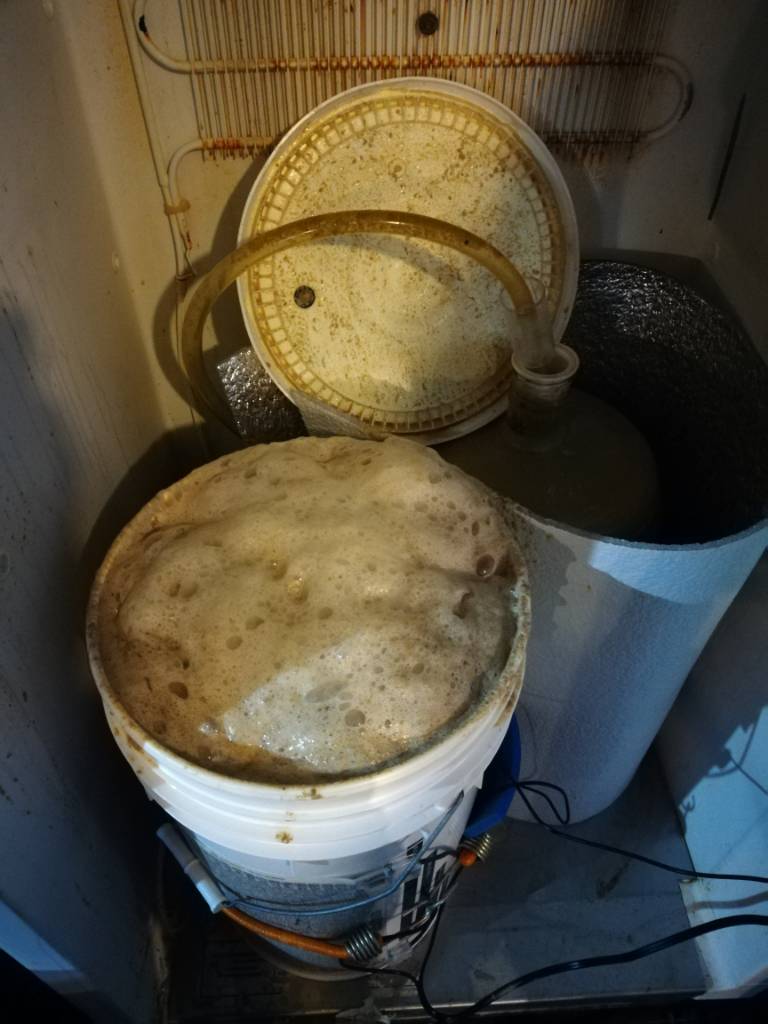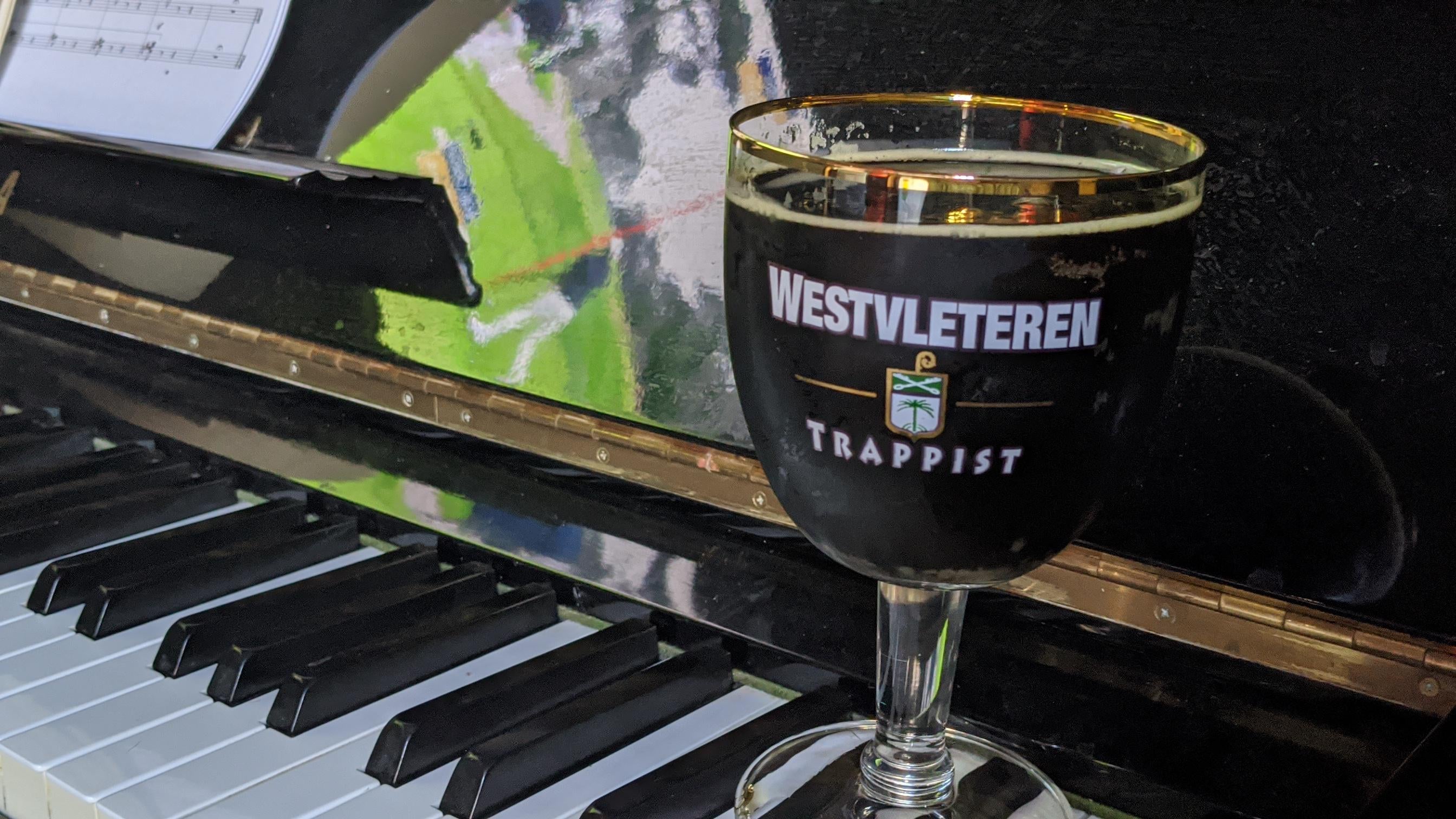OkieNotFromMuskogee
Active Member
First off I want to say thanks to CSI for the super detailed recipe's and guidance on brewing this beer, and to everyone else for all the great info in this thread. I brewed this up with a buddy of mine a few weeks ago and can't be happier with how it's turned out, and with no aging at this point, definitely a bit green, but still pretty tasty.
This was our first ever big beer, but we have about 15 batches under our belt and were able to hit all the numbers. We followed the pilsner/pale ale recipe, couldn't find Brewers Gold so swapped in Northern Brewer hops, pitched a 3 liter starter that we decanted before pitching. We didn't aerate the starter since it was on a stir plate, but did aerate the wort for about 10 minutes with a regular aquarium pump and aeration stone.
Took a note from this thread and used a 1 inch blowoff tube on the Fermzilla, which was needed, because wow, this yeast takes off! Fermentation temp peaked at 75, and a couple of weeks later we got 1.013 as our FG. Thankfully didn't have any problems with the fermentation stalling, not sure if we got lucky or did something right. We have it conditioning in a keg right now, we didn't hook it up to the keezer so hopefully we can keep our hands off it for a few months.
This was our first ever big beer, but we have about 15 batches under our belt and were able to hit all the numbers. We followed the pilsner/pale ale recipe, couldn't find Brewers Gold so swapped in Northern Brewer hops, pitched a 3 liter starter that we decanted before pitching. We didn't aerate the starter since it was on a stir plate, but did aerate the wort for about 10 minutes with a regular aquarium pump and aeration stone.
Took a note from this thread and used a 1 inch blowoff tube on the Fermzilla, which was needed, because wow, this yeast takes off! Fermentation temp peaked at 75, and a couple of weeks later we got 1.013 as our FG. Thankfully didn't have any problems with the fermentation stalling, not sure if we got lucky or did something right. We have it conditioning in a keg right now, we didn't hook it up to the keezer so hopefully we can keep our hands off it for a few months.












































![Craft A Brew - Safale S-04 Dry Yeast - Fermentis - English Ale Dry Yeast - For English and American Ales and Hard Apple Ciders - Ingredients for Home Brewing - Beer Making Supplies - [1 Pack]](https://m.media-amazon.com/images/I/41fVGNh6JfL._SL500_.jpg)
















